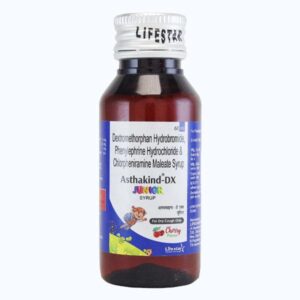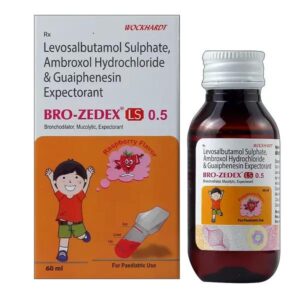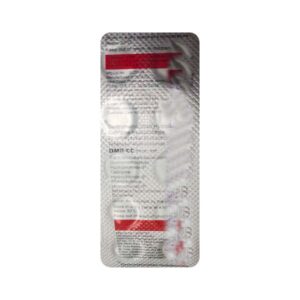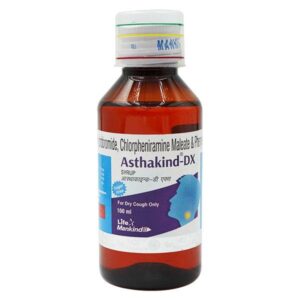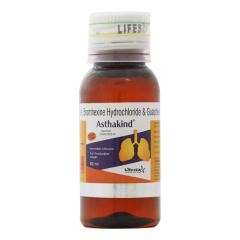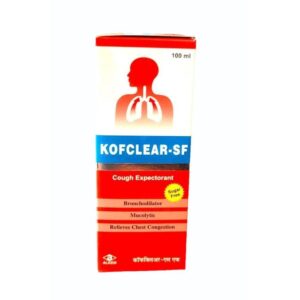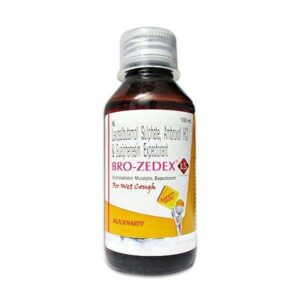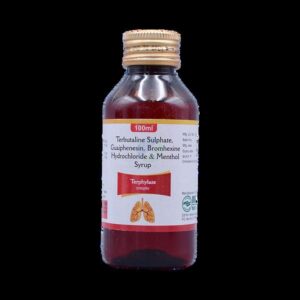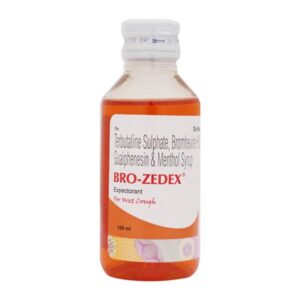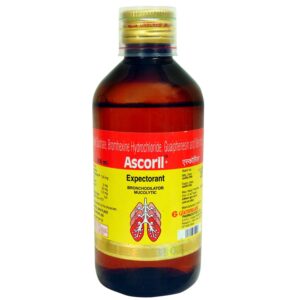BROMHEXINE + GUAIPHENESIN + MENTHOL + TERBUTALINE
Bromhexine: Bromhexine is a medication used to treat respiratory conditions and to facilitate the removal of mucus from the respiratory tract. It is commonly prescribed for conditions such as bronchitis, chronic obstructive pulmonary disease (COPD), and asthma.
The exact mechanism of action of Bromhexine is not fully understood. However, it is believed to work by increasing the secretion of mucus in the respiratory tract, which in turn helps to thin the mucus and make it easier to cough up. It is also thought to have some anti-inflammatory effects.
Bromhexine is available in various forms, including tablets, syrup, and oral solution. The dosage may vary depending on the specific condition being treated and the age of the patient. It is typically taken 3 times a day, with or without food. It is important to follow the recommended dosage and frequency as prescribed by a healthcare professional.
As with any medication, Bromhexine may cause side effects in some individuals. Common side effects may include nausea, stomach discomfort, diarrhea, headache, and dizziness. These side effects are generally mild and temporary.
Rare but potentially serious side effects may include allergic reactions such as rash, itching, swelling, and difficulty breathing. If any of these serious side effects occur, it is important to seek immediate medical attention.
It is important to note that Bromhexine may interact with other medications, so it is essential to inform your healthcare provider about all the medications you are currently taking to avoid potential drug interactions.
Overall, Bromhexine is a medication commonly used to treat respiratory conditions by helping to loosen and thin mucus in the respiratory tract. It is generally safe and well-tolerated, but it is always advisable to consult a healthcare professional before starting any new medication.
Guaiphenesin: Guaifenesin is a medication used as an expectorant to help loosen and thin mucus in the airways, making it easier to cough up. It is commonly used in the treatment of respiratory conditions such as coughs, chest congestion, and bronchitis.
The exact mechanism of action of guaifenesin is not fully understood. However, it is believed to work by increasing the volume and reducing the viscosity of respiratory tract secretions. This helps to stimulate the flow of mucus, facilitating its removal from the airways.
The usual recommended dose of guaifenesin for adults is 200 to 400 mg orally every 4 to 6 hours, not to exceed 2.4 grams per day. For children, the dose is typically based on their age and weight, and it is best to follow the instructions provided by a healthcare professional or on the product label.
Common side effects of guaifenesin may include nausea, vomiting, stomach pain, dizziness, headache, and rash. It is important to note that these side effects are usually mild and transient. However, if any severe or persistent side effects occur, it is recommended to seek medical attention.
Additionally, it is important to read the label and follow the instructions on the specific product you are using, as different formulations and combinations may have varying dosing recommendations and potential side effects. It is always best to consult with a healthcare professional for personalized advice and guidance regarding the use of guaifenesin.
Menthol: Menthol is a natural compound derived from peppermint oil commonly used topically as a pain reliever and a cooling sensation for the skin. It belongs to a class of drugs known as counterirritants.
The main use of menthol is for short-term relief of minor aches and pains, such as muscle or joint pain. It is often found in over-the-counter products such as creams, ointments, gels, and sprays for conditions like arthritis, backache, sprains, and strains. Menthol is also used as an active ingredient in cough drops, lozenges, and inhalers to provide temporary relief for sore throat or nasal congestion.
Menthol works by cooling and numbing the skin or mucous membranes, which helps to relieve pain and itching. It has a local anesthetic effect that can provide a soothing sensation when applied. Menthol also acts as a vasodilator, meaning it widens blood vessels, increasing blood flow to the affected area, which can help reduce inflammation.
The dose of menthol depends on the specific product and its concentration. It is important to follow the instructions provided by the manufacturer or as directed by a healthcare professional. Menthol is typically applied to the affected area three to four times a day. For oral products, like lozenges, the recommended dose should also be followed.
While menthol is generally considered safe when used as directed, it may cause some side effects. Common side effects include skin irritation, redness, or a burning sensation at the site of application. Some individuals may also experience an allergic reaction, such as rash, itching, or swelling. If these side effects persist or worsen, it is advisable to stop using the product and consult a healthcare professional.
It is important to note that menthol should not be used on broken or damaged skin, as it can cause further irritation. Additionally, menthol should not be ingested or applied near the eyes, nose, or mouth, as it may cause irritation or other unwanted effects.
As with any medication, it is recommended to consult a healthcare professional before using menthol if you have any underlying medical conditions or are taking other medications, to ensure it is safe and appropriate for your specific situation.
Terbutaline: Terbutaline is a medication used to treat conditions such as asthma, bronchospasm, and chronic obstructive pulmonary disease (COPD). It belongs to a class of drugs known as beta-2 adrenergic agonists.
The primary mechanism of action of Terbutaline is its ability to stimulate the beta-2 adrenergic receptors in the smooth muscles of the airways, leading to relaxation of the bronchial smooth muscles. This results in bronchodilation, which helps to relieve symptoms like coughing, wheezing, and shortness of breath.
Terbutaline is available in various forms, including tablets, inhalers, and injectables. The dosing may vary depending on the condition being treated and the form of the medication. Inhaled Terbutaline is commonly prescribed in the form of metered-dose inhalers (MDIs) or dry powder inhalers. The usual recommended dose of Terbutaline inhaler is 1 or 2 puffs every 4 to 6 hours as needed.
As with any medication, Terbutaline may cause some side effects. Common side effects include tremors, nervousness, headache, dizziness, increased heart rate, palpitations, and muscle cramps. These side effects are generally mild and resolve without any specific intervention. However, if any of these side effects persist or worsen, it is important to consult a healthcare professional.
In some cases, Terbutaline may have more serious side effects, such as chest pain, irregular heartbeat, severe dizziness, difficulty breathing, or allergic reactions. If any of these occur, immediate medical attention should be sought.
Terbutaline should be used with caution in individuals with certain health conditions, including heart problems, high blood pressure, diabetes, and hyperthyroidism. It may also interact with other medications, so it is important to inform your healthcare provider about all the medications you are taking.
Overall, Terbutaline is a commonly prescribed medication for the management of asthma and other respiratory conditions. It provides relief by dilating the airways and reducing bronchospasms. However, its use should be under the guidance of a healthcare professional to ensure appropriate dosing and to monitor for any potential side effects.


